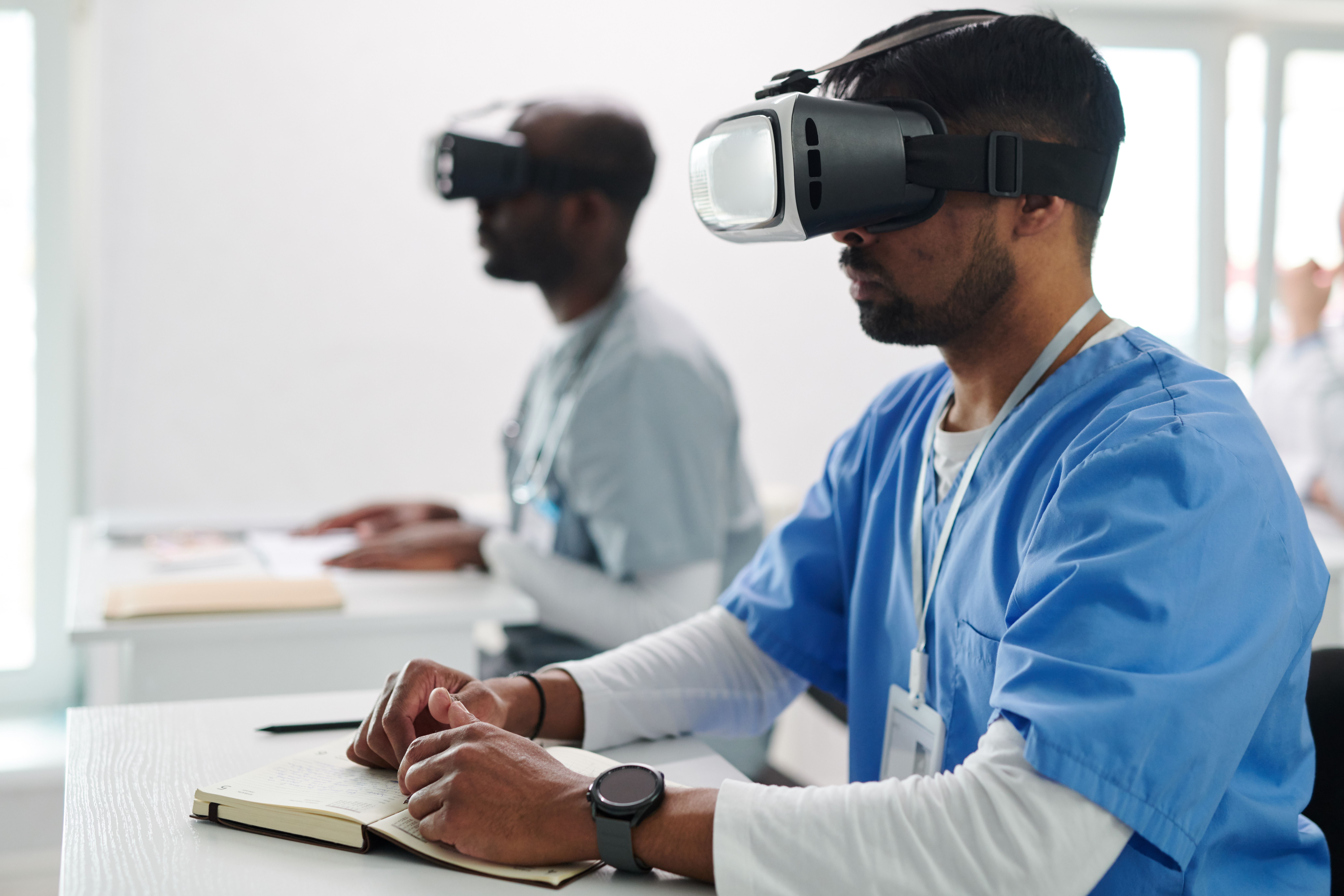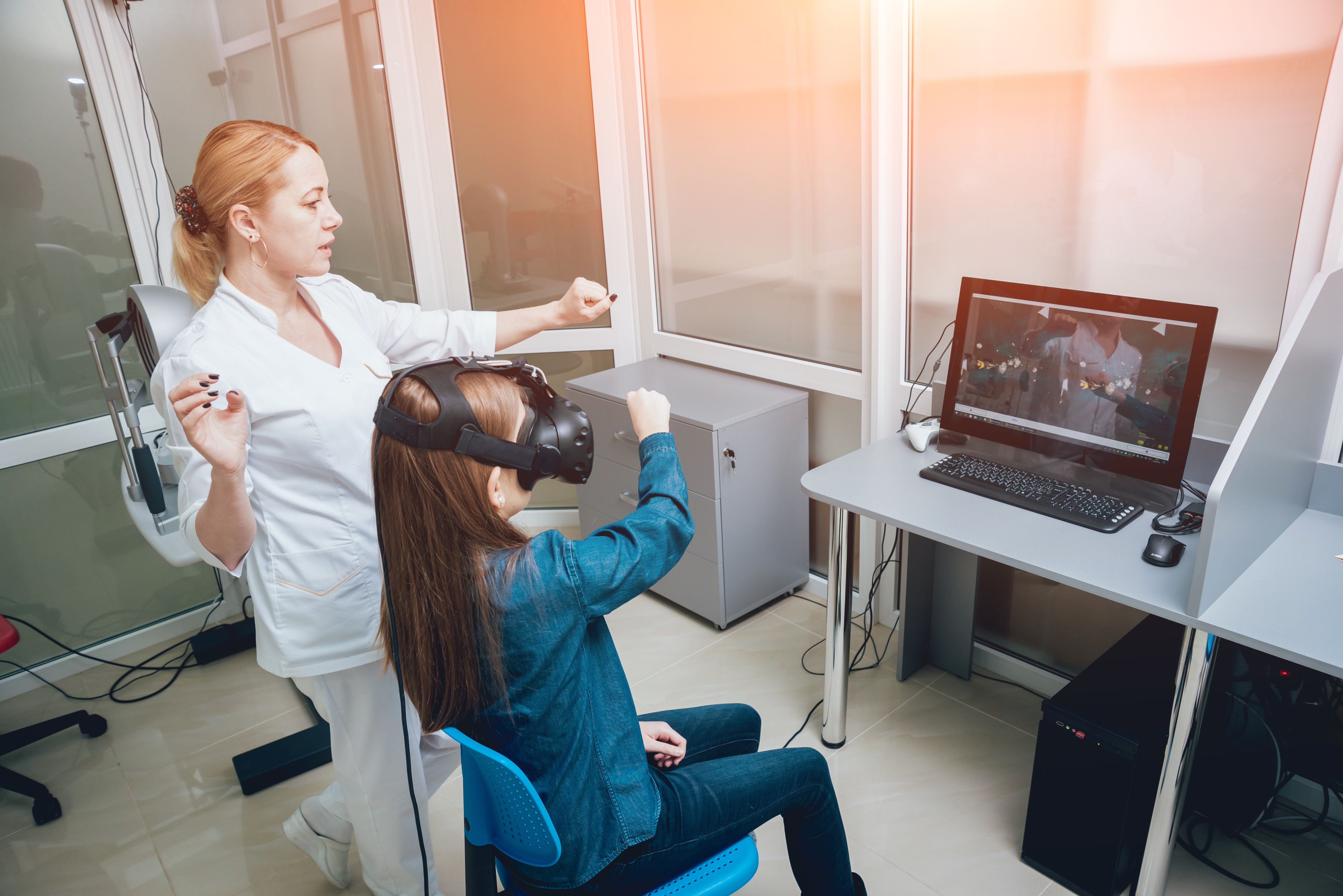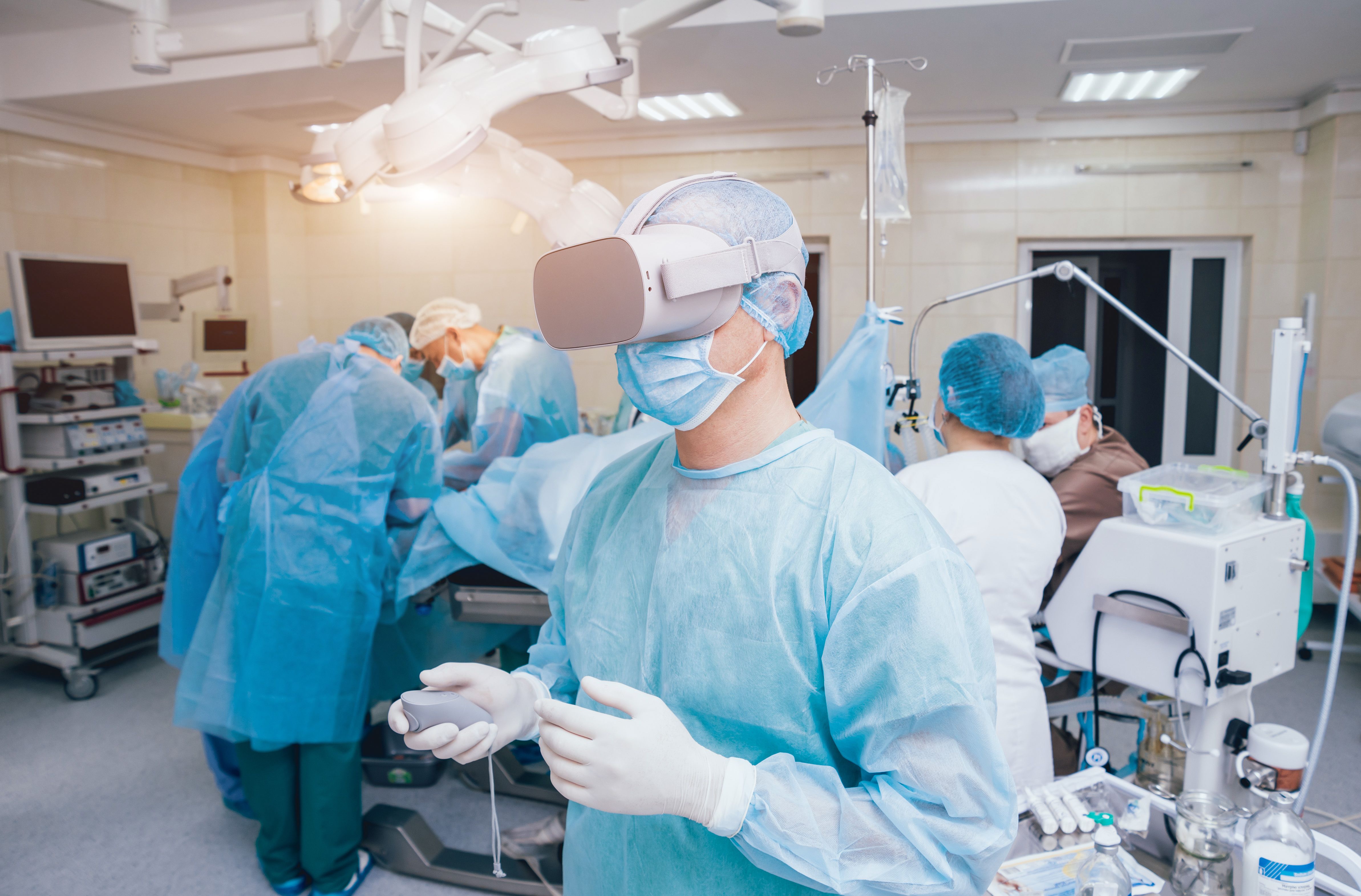Are you looking for new ways to teach the intricate art of surgery in medical schools or hospitals? Do you want to know what sets traditional surgery teaching approaches apart from these new alternatives? It's time to consider virtual reality (VR) learning programs. Technology is always evolving, and so are the teaching approaches toward medical procedures. In this blog post, we'll discuss why choosing a VR-based learning program for aspiring surgeons could be beneficial for both students and new doctors. Keep reading if you want to discover more!
Introducing VR Learning Programs for Aspiring Surgeons
VR learning programs for aspiring surgeons are as diverse as their definitions. However, they can be perceived as immersive, interactive training programs based on extended reality technologies.
These programs simulate realistic surgical procedures and environments to enhance future surgeons' education. Additionally, they can provide a safe, controlled, and effective way for medical students to learn, practice, and refine their surgical skills before performing real-life operations.
VR Learning Programs for Aspiring Doctors: Features and Benefits
Do you want to learn more about the features and benefits of virtual reality learning programs for aspiring doctors? Learn more here!
Realistic Simulations and Students’ Engagement
VR learning programs provide students with highly detailed 3D human anatomy models and surgical tools. Thanks to virtual reality, they can visualize and interact with the human body before they face real surgery after earning their medical doctor degrees.
Procedure-Based Training Approaches and Specialization
Since VR learning programs for surgery, students are comprehensive, they can cover a wide range of procedures. For instance, aspiring surgeons can decide on the modules they want to focus on. As a result, they can become more proficient and skilled in their chosen medical specialty.
Virtual Environments to Learn New Skills for Future Surgeons
VR learning programs enable students and new doctors to participate in a shared environment where they can practice teamwork, communication, assertive communication, prioritization, and problem-solving. These programs also provide spaces to learn these valuable skills.
Haptic Feedback to Simulate the Human Body Movements
Many VR learning programs for aspiring surgeons incorporate haptic feedback technology to guide students through tactile sensations. These sensations mimic human body movements, so trainees can better understand the forces, resistance, and textures they encounter during surgeries.
Data-Based Learning to Track Students’ Performance
Virtual learning programs for surgeons utilize advanced analytics to monitor a student's progress while identifying areas for improvement. The information acquired is evaluated to aid medical schools and hospitals in recognizing the personalized learning requirements of each student.
This tailored training helps aspiring surgeons better comprehend their patients' healthcare requirements, leading to more inclusive care. Additionally, these programs provide a convenient and cost-effective means for students to obtain top-quality education while encouraging continuous learning in their professions.
Scalability and accessibility to foster inclusive education
The scalability of these programs makes them widely available to medical schools, faculties, hospitals, and students worldwide. With virtual reality-based learning, students can receive a high-quality education regardless of their location, financial situation, or cultural background.
Expanding access to surgical education has the potential to democratize specialized knowledge and make the field more inclusive and democratic.
Diving into the Future of Surgical Education: VR Learning Programs vs. Traditional Teaching Methods
Virtual reality has become a popular educational tool in various fields, particularly within the realm of surgery. But in what ways does VR learning differ from traditional teaching methods? We’ll highlight their respective contrasts for you.
Learning Experience
Virtual reality learning programs offer medical students and surgeons a risk-free, immersive environment in which to simulate surgical procedures that closely mirror real-life operations.
VR technology can provide medical professionals with simulated scenarios to learn from mistakes and improve their abilities in a safe and controlled setting. This enables professionals to be more confident and decisive, positively affecting their operating room skills.
In contrast, conventional teaching methods facilitate an interactive learning experience through face-to-face communication between instructors and peers. Such methods incorporate practical knowledge and foster an environment of collaborative discussions and in-depth analysis, which can be highly effective.
Learning Sustained on Evidence
Despite traditional teaching methods' long history and proven effectiveness, innovative technologies like VR are promising in medical and faculty schools.
Incorporating VR into surgical education could significantly improve educational outcomes. However, further research is required to determine the effectiveness of this new technology in surgical education to ensure that students receive the most comprehensive training possible.
Learning Personalization
Virtual reality technologies can potentially personalize the surgical training process. By collecting data about students through VR learning programs, medical schools, and universities can develop tailored approaches to address individual needs, effectively improving the quality of surgical education.
Personalized learning in traditional surgery teaching methods can be a complex issue. The customization level often relies on instructors' preferences and their rapport with students or aspiring surgeons. Moreover, such methods may not always be comprehensive enough to address all students' learning demands.
Costs and Time
The expenses of teaching surgical procedures through traditional methods versus virtual reality learning programs can differ substantially.
While expensive technology used in VR may give the notion of being more costly, it's crucial to consider the high expenses that medical education already incurs, such as tuition fees and supplies, which can be burdensome to students and their families.
Whether based on immersive technologies or traditional methods, the learning program's design determines financial inclusivity.
Traditional medical schools demand significant time commitments, which can make balancing education and other obligations difficult for students. Immersive learning programs allow aspiring surgeons to study independently with only a VR headset and an internet connection.
This immersive approach is an advantageous alternative for students striving to balance their education, career, and family life.
Takeaway
VR learning programs offer numerous advantages for aspiring surgeons. Not only do they offer a more immersive experience with real-time feedback for students, but they also allow them to practice without the risk of making mistakes.
As technology continues to evolve, we can expect greater advancements in these types of training programs that can revolutionize how future medical professionals are educated. If you want to learn more about how VR can enhance surgery learning initiatives in medical schools, contact Vection Technologies today!


